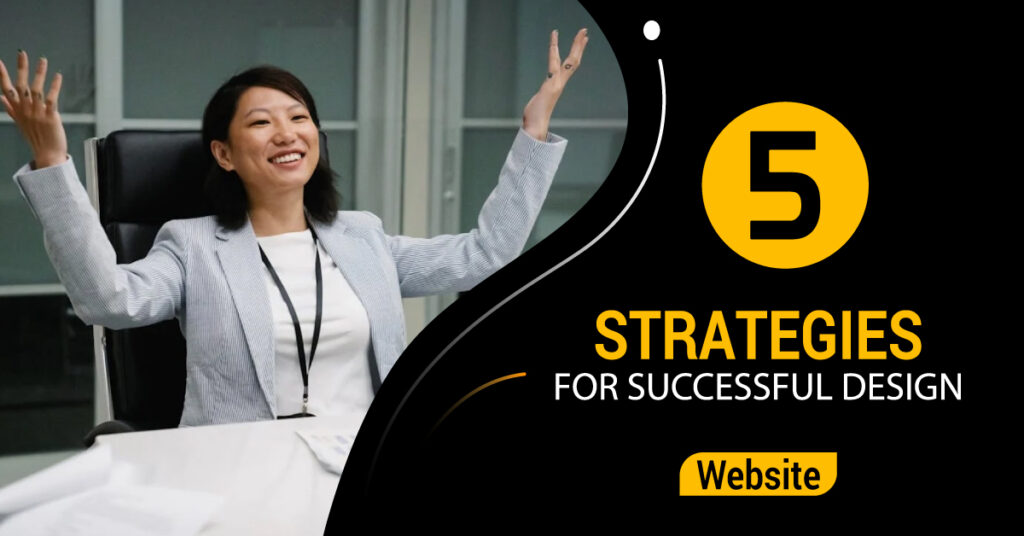Website designing is not limited to its appearance or external structure for website. The website may be to promote a brand or company, sell a product, or convey a specific message.
Website Designing very important as the visual appeal of the website is, its functionality is equally very important. When the user experience of the website improves, it is considered successful. A brand’s connection with a user is created through the website and the success of the business depends on it. So different techniques should be adopted while designing the website, which makes the website beautiful, effective and user friendly. Following are 5 tips to follow to design a successful website:
1. User-Friendly Navigation
Website navigation (Navigation) means the way to go to different pages of the website. It helps users navigate the website easily. If navigation is complicated, users will leave the site quickly. One of the most important techniques in website design is that the user can easily access the various sections and find the information he needs.
Some key points to keep in mind for ease of navigation:
Use simple and clear menus: Include the main topics in the website menu and present them in an orderly manner. The menu is usually placed at the top of the website, so that it is very easily visible.
Use Breadcrumbs: Navigation tool that shows users links to the current page and previous pages. It helps users navigate between pages quickly.
Footer Navigation: Many websites have additional links in the footer in addition to the menu. It gives users easy access to information and quick access to other pages.
Clear, simple and convenient navigation is essential to enhance the user experience. Properly designed navigation saves users time and improves their interaction experience.
2. Responsive Design
Responsive design is a very necessary technique, the website suitable for different types of devices. Nowadays websites are browsed on different devices as like mobile, tablet and desktop. Hence, a website must be responsive, so that it fits any screen size.

Advantages of Responsive Design:
BETTER USER EXPERIENCE: If users are viewing a website on mobile or tablet if it is inconsistent, they leave the site faster. Responsive design makes the user experience smooth.
SEO Factor: Google prefers responsive websites and ranks websites higher in search engine results. This is important for SEO.
Simplifies Website Maintenance: Responsive Design there is no need to create separate websites for many devices. It makes website management and maintenance easy. Use bright or contrast colors on important parts, so that they catch the user’s attention.
Responsive design is a timely and necessary strategy, which improves user experience and contributes to business success.
3. Clear Visual Hierarchy
The design technique that guides users’ eyes so that they can easily see important parts of a website. It is a system where different elements are arranged according to their importance. When visual hierarchy is designed properly, the user can easily understand what to see and what information is important.
Some techniques that help create a clear visual hierarchy:
Large and Clear Headings: Main headings and sub-headings of the website should be kept large and clear. Through this, the user will quickly understand what is important.
Use of color: It is possible to create visual hierarchy through different colors. Use bright or contrast colors on important parts, so that they catch the user’s attention.
Spacing and Margins: It is important to leave enough space between required elements. As a result, the page is smooth and easy to read. Design is a process consisting of creative and technical skills, which is successfully completed by following the right techniques.
Visual hierarchy increases website readability and speeds up user interaction. It guides users and helps them find the information they need quickly.
4. Optimized Loading Speed
Website loading speed is an important factor that affects website user experience. If a website does not load within 3 seconds, most users leave it.
Some tricks to increase loading speed:
Image Optimization: Larger images increase website loading time. Therefore, by compressing the image the file size should be reduced, but maintaining the image quality. Hence, creating a fast loading website is very important for access.
Design is a process consisting of creative and technical skills, which is successfully completed by following the right techniques. One of the most important techniques in website design is that the user can easily access the various sections and find the information he needs.
Use Caching: Website caching is a technique by which web page data is temporarily saved and displayed faster when reloaded. It increases website speed. Therefore, by compressing the image the file size should be reduced, but maintaining the image quality.
Fewer file requests: Too many CSS, JavaScript and image file requests on the website increase the loading time of the website. so fewer files should be requested as possible.
This is important for SEO, as Google ranks fast-loading websites higher on google.
5. Search Engine Optimization
SEO plays a very important role this makes the website more effective and easier to find Which increases website performance and improves user experience. mainly done through keywords, meta tags, content optimization, and link building, which helps increase website traffic.
SEO techniques that should be applied in website design:
Meta Tags and Keywords: Proper keywords and meta tags should be used for each page. Through this the search engine can index the website better.
Correct URL Structure: Website URL structure should be simple, clear, and SEO friendly.
Image Alt Tags: It is very important to use Alt Tags for images so that search engines can understand the images and index them. Design is a process consisting of creative and technical skills, which is successfully completed by following the right techniques. Focusing on SEO improves website ranking and brings more traffic. A successful design and SEO friendly website reaches users easily and creates more opportunities for business.
Design is a process consisting of creative and technical skills, which is successfully completed by following the right techniques. One of the most important techniques in website design is that the user can easily access the various sections and find the information he needs. The main goal of successful website design is to improve the user experience, increase business conversions and strengthen the brand. more
